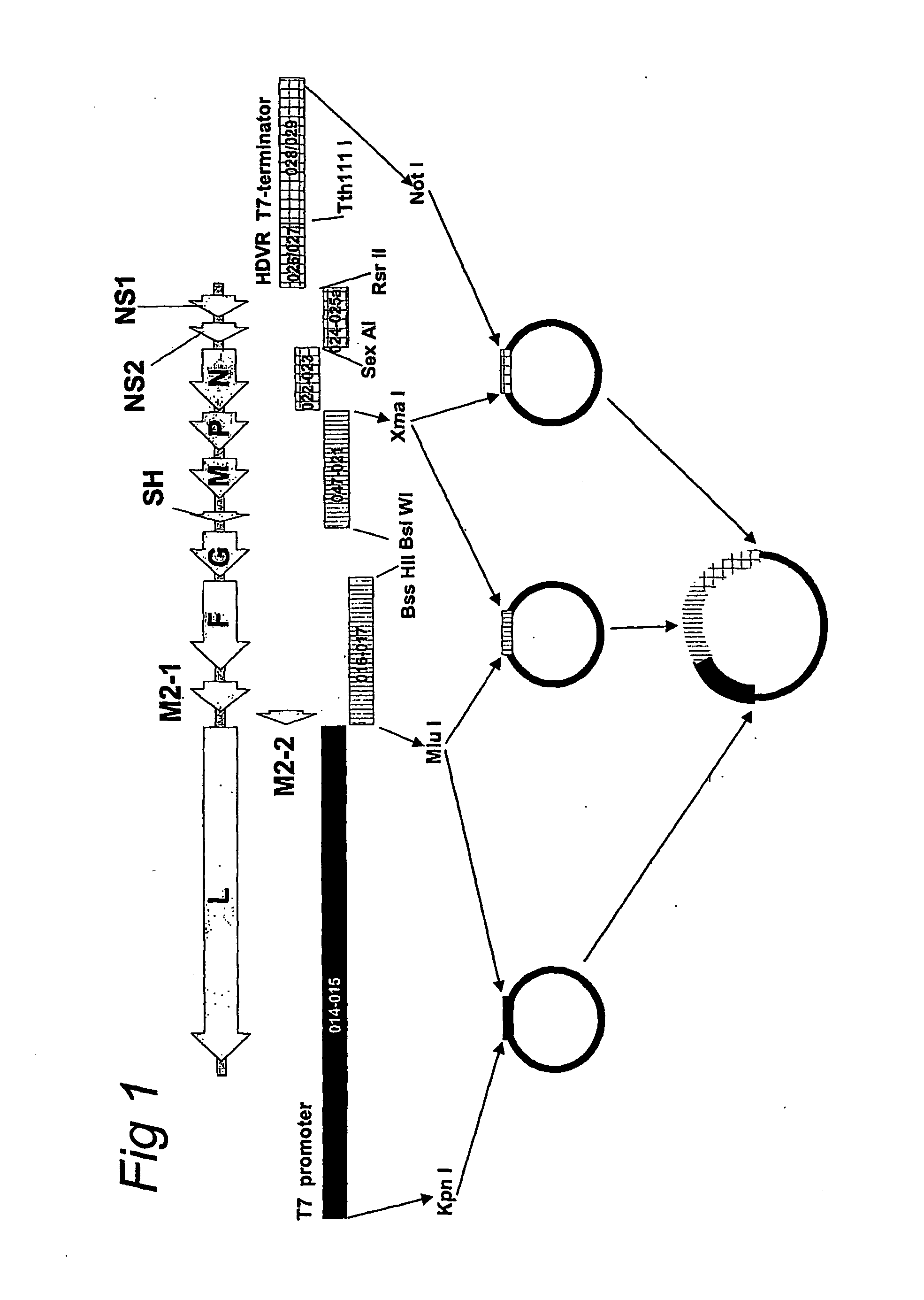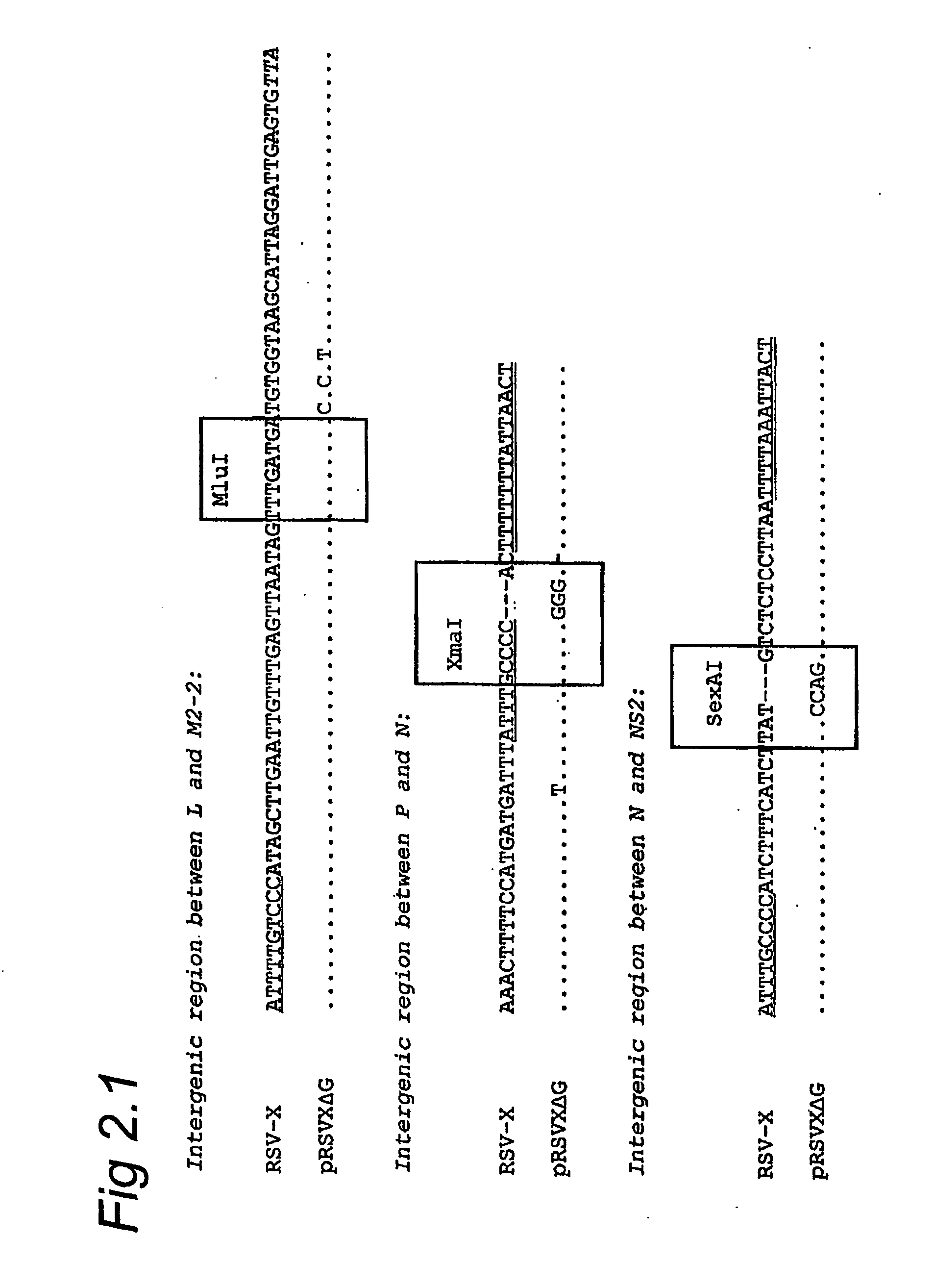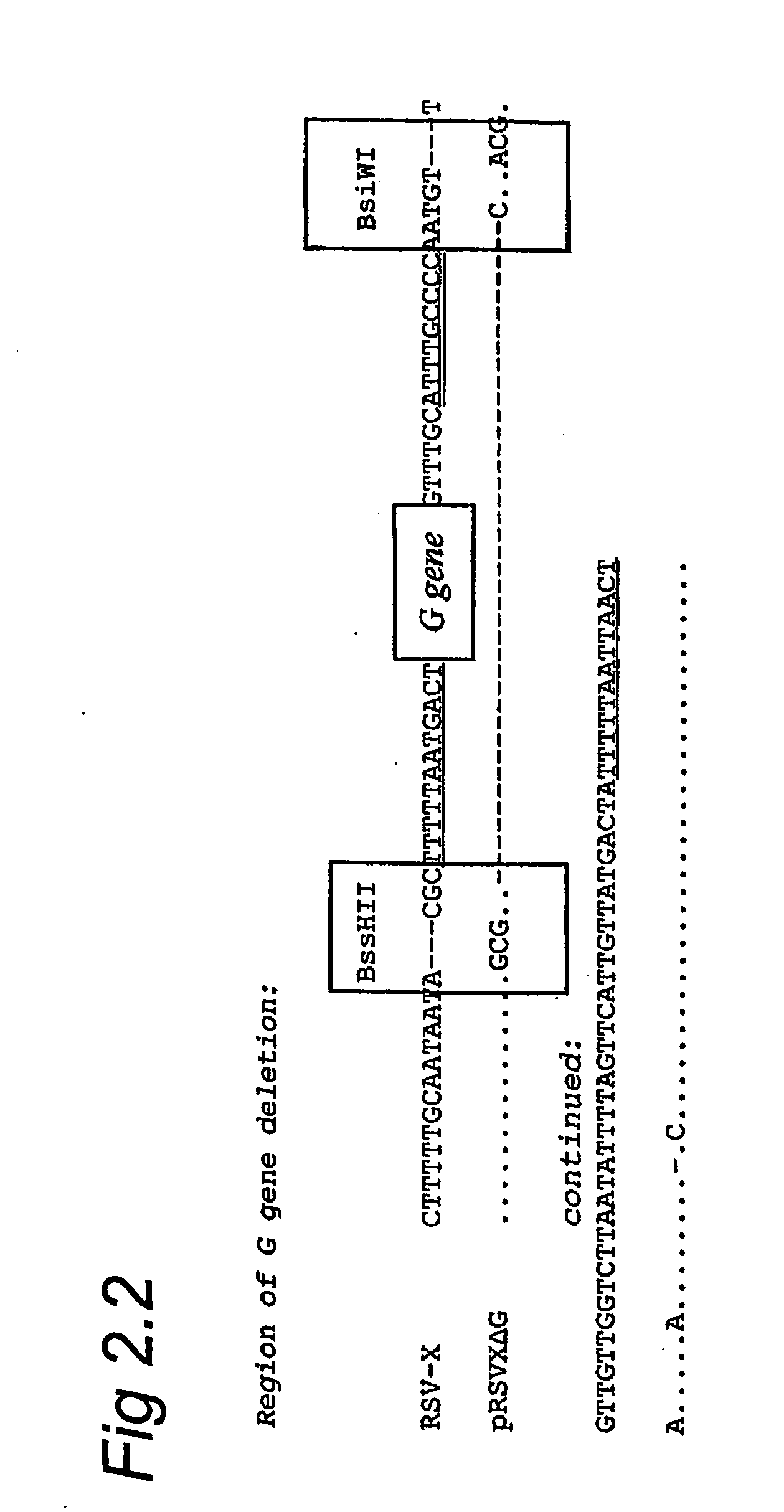Respiratory syncytial virus with a genomic deficiency complemented in trans
a technology of respiratory syncytial virus and genomic deficiency, applied in the field of vaccines, can solve the problems of ineffective h-rsv vaccine available in the art, high complexity of vaccine design, and inability to efficiently spread rsv through aerosols
- Summary
- Abstract
- Description
- Claims
- Application Information
AI Technical Summary
Benefits of technology
Problems solved by technology
Method used
Image
Examples
example 1
Viral Isolate, Virus Isolation, Propagation and Storage
[0051]The basis for the recombinant h-RSV clone is a clinical RSV isolate, obtained from the Leiden University Medical Centre diagnostic laboratory. This virus, named 98-25147-X, coded after the patient from which it was isolated, was derived from a diagnostic test on Hep-2 cells in the period 21-24 Dec. 1998. It was later determined to be a subtype A isolate and is designated RSV isolate X. The virus was passaged 4 times on Hep-2 cells in T75 bottles in DMEM (Gibco), 10% FCS, pen / strep / glu and subsequently five times on Vero cells in T75 bottles on in DMEM (Gibco), 10% FCS, pen / strep / glu. The resulting RSV isolate X virus was used as working stock and stored at −135° C. in 25% or 45% sucrose.
example 2
Construction of RSV-X cDNA Encoding Viral Genome
[0052]Total RNA was obtained by phenol-guanidine isothiocyanate extraction (Trizol, Invitrogen) of stock RSV isolate X infected Vero cells. cDNA was prepared by reverse transcription using Thermoscript (Invitrogen) reverse transcriptase using random hexamer primers. This cDNA was used as template for PCR using High fidelity Taq polymerase (Invitrogen) using specific primers containing restriction enzyme recognition sites (Table I and sequence listing). Primers were designed based on the published sequences of RSV-A2 (Genbank accession no M74568) and RSV-RSS2 (Genbank accession no U39662).
[0053]PCR products were first cloned individually in different vectors: primer pairs, vectors, restriction enzyme recognition sites and resulting vector name are listed below.
RSV021 / RSV047: pCAP vector (Roche), bluntly into Mlu N1, pCAP3 (SH / M / P region)
RSV018 / 019: pCAP vector, bluntly into Mlu N1, pCAP2 (G region)
RSV016 / RSV017: PUC21, Mlu I / Bam HI, pUK...
example 3
Construction of ΔG-RSV Isolate X Full Length Plasmid
[0056]The full-length cDNA spanning the entire RSV isolate X genome was assembled by sequential ligation of PCR fragments (FIG. 1). The “trailer” end is preceded by the promoter for the bacteriophage T7 polymerase. To generate correct 3′ ends the cDNA “leader” end is fused to the hepatitis delta virus ribozyme (HDVR), followed by a terminator of the T7 RNA polymerase transcription (see FIG. 1).
[0057]First, two sets of complementary oligomers encoding the HDVR and the T7 terminator RSV026 / RSV027 oligo's and RSV028 / 029 oligo's were phosphorylated with T4 DNA kinase, hybridised and ligated into clone pUK1 (containing genes NS1 / NS2) via Rsr II / Not I, giving plasmid pUK3. Then, the Xma I / SexA I fragment of clone pUK4 containing N was ligated into plasmid pUK3 via Xma I / SexA I. This plasmid (pUK6) contains the region from the N gene up to the 3′ leader sequence, fused to the HDVR and a T7 terminator.
[0058]Secondly, the Xma I / Eco RV fragm...
PUM
 Login to View More
Login to View More Abstract
Description
Claims
Application Information
 Login to View More
Login to View More - R&D
- Intellectual Property
- Life Sciences
- Materials
- Tech Scout
- Unparalleled Data Quality
- Higher Quality Content
- 60% Fewer Hallucinations
Browse by: Latest US Patents, China's latest patents, Technical Efficacy Thesaurus, Application Domain, Technology Topic, Popular Technical Reports.
© 2025 PatSnap. All rights reserved.Legal|Privacy policy|Modern Slavery Act Transparency Statement|Sitemap|About US| Contact US: help@patsnap.com



